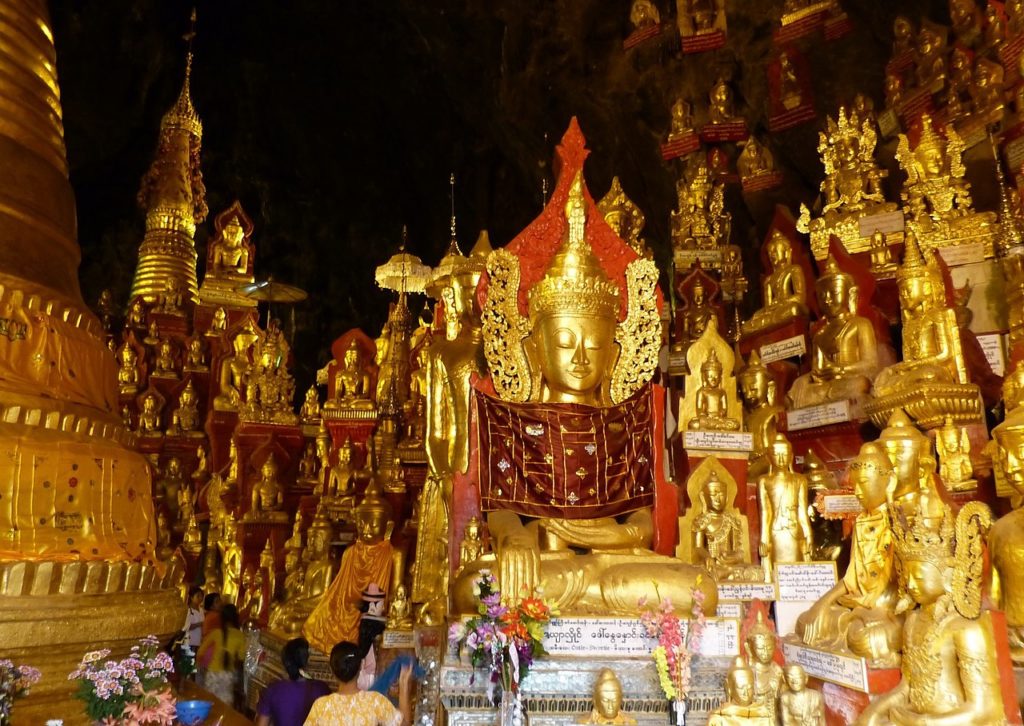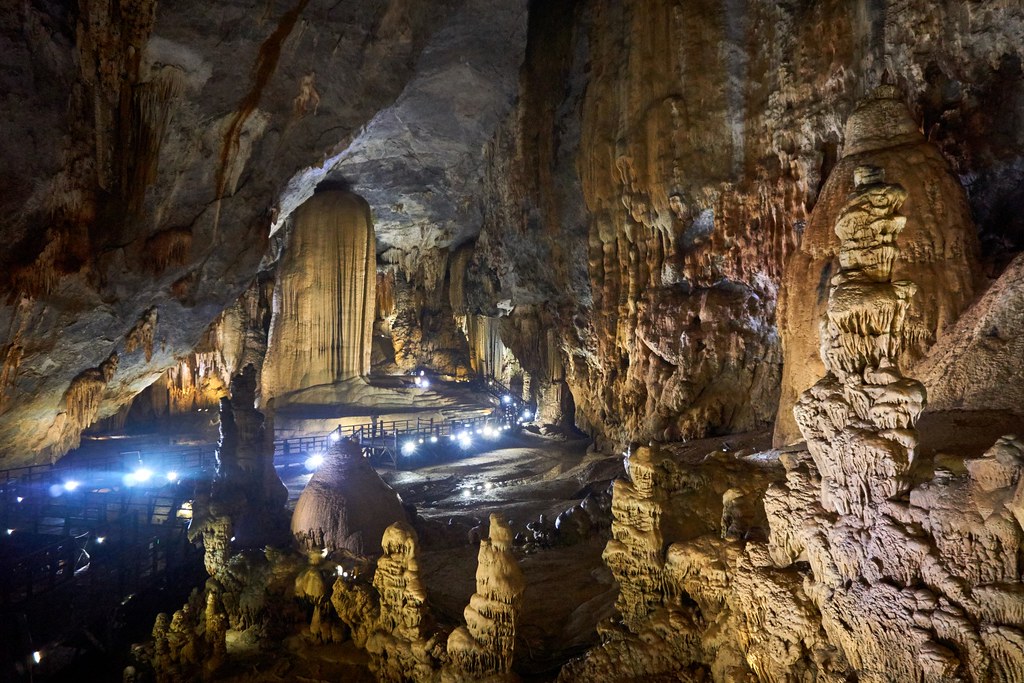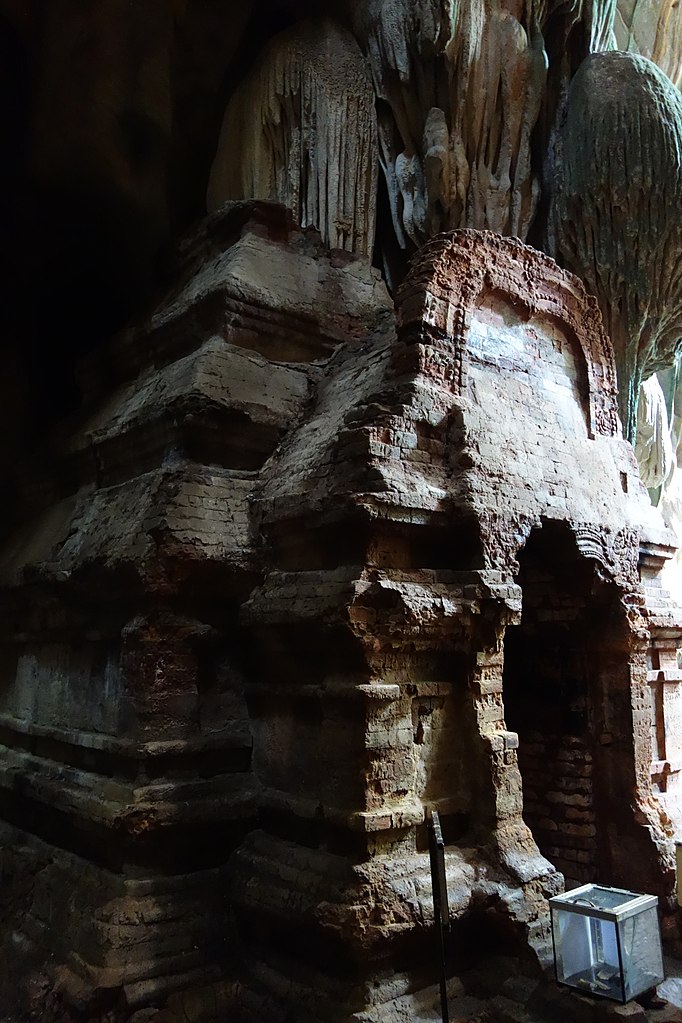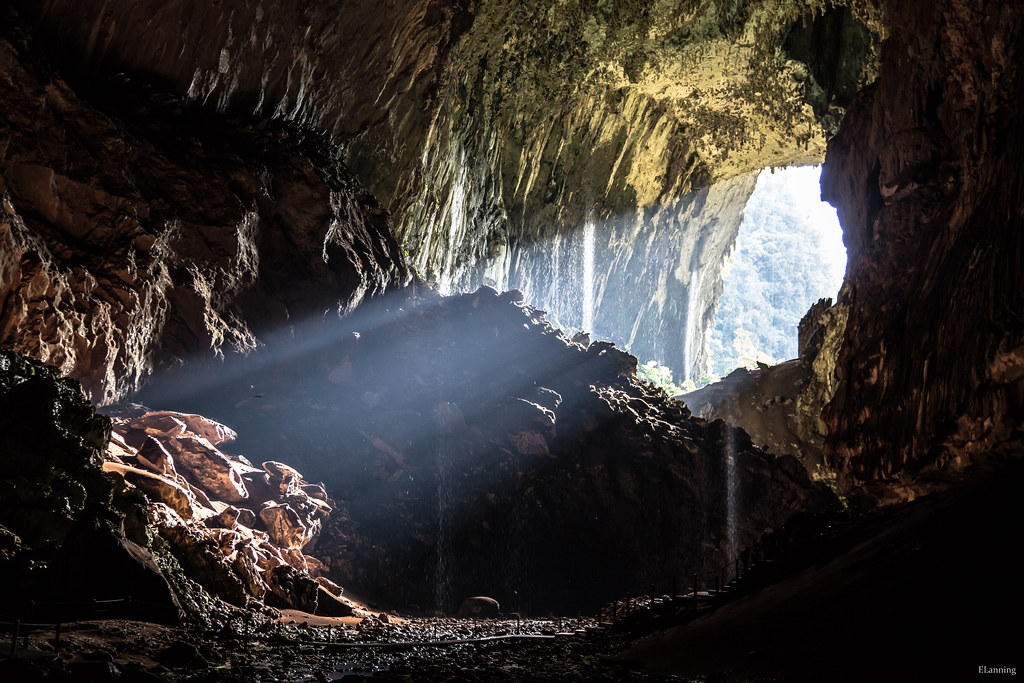Many of the region’s ancient cave temples are still active sacred sites, and its complex subterranean systems protected thousands of people during 20th century conflicts. Some are geological world-record holders, still being discovered by scientists. A number of them are also open to visitors, so we’ve selected the six most impressive that you can explore.
Pindaya Caves, near Kalaw, Myanmar
A series of eerie limestone caverns filled to the roof with at least 8,000 images and statues of Buddha, this sacred site is currently believed to date back to the 1750s. The Buddhas represent an incredible range of workmanship and styles from all over Myanmar, having been donated by rich and poor pilgrims throughout the last 250 years.
 To enter the caves, pilgrims must first bravely pass a Disney-worthy giant model spider with huge pointy teeth (a modern spin on a local legend). The dedicated then climb an intimidating flight of some 700 steps, which lead up the limestone ridge overlooking Pone Taloke Lake – a pilgrimage isn’t meant to be easy! The less able (and less devout) needn’t feel put off, however – there is also a lift.
To enter the caves, pilgrims must first bravely pass a Disney-worthy giant model spider with huge pointy teeth (a modern spin on a local legend). The dedicated then climb an intimidating flight of some 700 steps, which lead up the limestone ridge overlooking Pone Taloke Lake – a pilgrimage isn’t meant to be easy! The less able (and less devout) needn’t feel put off, however – there is also a lift.
Vieng Xai Caves, Hua Phan Province, Laos
Close to the Laos side of the Vietnam border, about level with Mai Chau on the map, lies a vast honeycomb of limestone caves. Although not the most gorgeous set of caverns in our list, the Vieng Xai complex is impressive because it sheltered 20,000 people during nine years of near-constant bombing by the USA, while the latter tried to suppress Asian Communism during the 1960s.
Originally a Resistance stronghold against French Colonial authorities, the caves became a sanctuary for locals, as well as HQ to the Pathet Laos leaders who fought for independence throughout the 20th century. Now the Resistance is in charge of the country, and the once-secret caves, which contained temples, hospitals and schools as well as military areas, have been opened for public viewings.
Phong Nha Cavern, Phong Nha-Ke Bang National Park, Vietnam
Visually stunning, enormous, and buried beneath a beautiful UNESCO-protected landscape, Phong Nha is one of the jaw-droppers on our list. 26.5 miles long with countless grottoes and an underground river, much of Phong Nha is dangerous and off-limits to the public, but the first mile is accessible, some of it even by boat.
 Apart from its dramatic proportions, Phong Nha is known for its awe-inspiring appearance, with complex formations, vast dry caves clad with glittering stalactites, deep shadowy terraces, and of course that enigmatic underground river. Selective Asia’s adventure specialist Kate took these photos on her last visit.
Apart from its dramatic proportions, Phong Nha is known for its awe-inspiring appearance, with complex formations, vast dry caves clad with glittering stalactites, deep shadowy terraces, and of course that enigmatic underground river. Selective Asia’s adventure specialist Kate took these photos on her last visit.
Phnom Chngouk Temple cave, Kampot, Cambodia
This picturesque sacred cave is about 5 miles east of Kampot, on Cambodia’s beautiful southern coast. There are a couple of hundred steps to climb to reach the cave entrance, so this is not for the faint-hearted or those with creaky knees.
 The effort is worth it, though – it’s easy to imagine why this became a sacred spot. An elephant-shaped stalactite guards the entrance, and two natural chimneys soar up from the inner chambers, opening to the skies. Within the atmospheric main cavern sits an 7th century brick temple, beautifully preserved due to being protected from the elements.
The effort is worth it, though – it’s easy to imagine why this became a sacred spot. An elephant-shaped stalactite guards the entrance, and two natural chimneys soar up from the inner chambers, opening to the skies. Within the atmospheric main cavern sits an 7th century brick temple, beautifully preserved due to being protected from the elements.
Mulu Caves, Gunung Mulu National Park, Sarawak
Mountainous Gunung Mulu NP, a UNESCO World Heritage site in Malaysian Borneo, protects just over 200 sq miles of equatorial rainforest, along with thousands upon thousands of species, and several indigenous tribes. It’s spectacular enough above ground, but far beneath the craggy limestone spires and leafy mulch lies the world’s largest cave chamber – just one cavern in a network of caves, tunnels and subterranean rivers that spreads for hundreds of miles below the forest.
 The area is hard to reach, but spectacular to explore, and adventure travel here is gaining ground – there are several basic chalets available throughout the park, with more luxurious accommodation to be found at the Mulu Marriott, just outside the park’s boundary.
The area is hard to reach, but spectacular to explore, and adventure travel here is gaining ground – there are several basic chalets available throughout the park, with more luxurious accommodation to be found at the Mulu Marriott, just outside the park’s boundary.
According to selectiveasia.com













